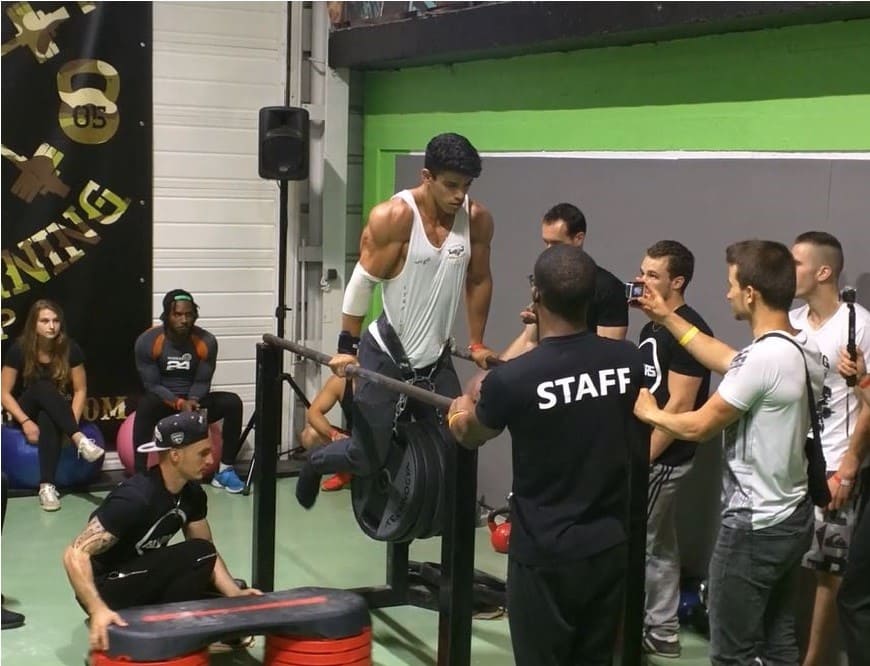Among the basic physical capabilities, I would like to highlight the strength. Everyone talks about strength, and this is the main protagonist in the training of Calisthenics and gymnastic modalities. However, do you really know what it is and how can we improve it? In this post I will talk about the different types of strength we can find and the ways to improve each type of this capacity.
What is strength?
We could define strength as that physical quality that allows us to maintain, overcome or oppose external resistance. As reflected in Newton’s second law, F = m · a, an object with a constant mass will accelerate in proportion to the net force acting on and in inverse proportion to its mass.
Strength training is becoming increasingly important in the context of health. Examples are the loss of fat or in the prevention of several pathologies. But, does everyone work strength in the same way? Let me explain:
On the one hand, a weightlifter works strength, but with a goal of lifting in certain specific exercises the maximum weight for a single repetition.
On the other hand, in a gymnast the strength predominates, but with an objective of making the sequence of more complex exercises in a certain time; that is, ring exercises, acrobatics on the ground, parallel bar sequences, etc…
Well, these two athletes work hard, right? But their specialties, at the same time, are very different.
What types of strength exist?
Within strength training we can find different manifestations. The following classification is the most traditional:
– Maximum strength
– Speed strength
– Resistance strength
MAXIMUM STRENGTH
Maximum strength is the maximum force that a group of muscles can generate through voluntary contraction. Specifically, it is the largest weight that a person can move in a single movement. Thus we will relate the concept of ‘RM’ (Maximum Repetition), as the maximum weight that I can mobilize in a repetition.
Maximum strength can be improved through increasing muscle size (muscle hypertrophy) or intramuscular coordination. The latter focuses mainly on the recruitment of motor units, that is, that the joints between the muscle fibers and the neurons are more effective, they have a good activation frequency and synchronize well to provide a greater stimulus.
How to train maximum strength?
For maximum strength, taking into account the principles of training, we might consider that we work maximum strength with a type of exercise that primarily stimulates the nervous system. That is, roughly quantifying, work with an intensity of between 85-100% of the RM, at a range of between 1 to 5 repetitions. With a total of 4 to 8 series and 3 to 5 exercises per session. The rest will be 3 to 5 minutes and the speed of execution will be the maximum allowed by the weight.

SPEED STRENGTH
Speed strength is the ability to exert as much force as possible in the minimum possible time. In the world of calisthenics, it is typically worked in order to perform exercises such as the Muscle up.
Within this manifestation we could cover the initial and explosive force:
The initial strength can be understood as the capacity of the neuromuscular system (neuron-muscle relationship) to generate high tensions at the beginning of the movement.
The explosive strength would be the ability of the system to continue producing as quickly as possible the increase of that tension induced. If our neuromuscular efficiency is higher, that connection of the nervous system with the muscular system will make the signal and information arrive earlier and with an optimal impulse to the muscle to generate greater power.
How to train speed strength?
For speed strength, taking into account the principles of training, we could consider that we work at a percentage of intensity ranging from 30 to 70% of the 1RM, at a range of 2 to 6 repetitions. With a total of 3 to 5 series and 3 to 5 exercises per session. The rest will be 2 to 4 minutes and the speed of execution will be potentially explosive, simulating the speed of the technical model that interests working.
The percentage of intensities in this case is wider, since if we tend to work at higher percentages, we would use mainly maximum power methods (work / time), while if we use lower percentages, we would perform a Speed Resistance Training (improvement of the average power). The latter aims to improve the speed of execution but for a certain time. It is not the same if we want to perform a single Muscle up at maximum speed than 6 at high speed.

RESISTANCE STRENGTH
Resistance strength is the muscular capacity to withstand the fatigue caused by a prolonged effort in the time in which a high number of repeated muscular contractions is performed. In calisthenics it would be typical in the well-known ‘supersets’, in which basic exercises with a high number of repetitions are practiced, taking the body to the limit of lactic acid production, a substance directly related to muscle fatigue.
In this manifestation, we can find three types of resistance force. The one of short duration (between 30 seconds and 1 minute), the one of medium duration (between 1 minute to 5 minutes) and the one of long duration (more than 5 minutes).
How to train resistance strength?
For the strength of short duration resistance, taking into account the principles of training, we could consider that we work it at intensity percentages ranging from 5 to 40% of the 1RM, with the maximum repetitions that can be performed between 30 seconds to 1 minute, with a total of 4 to 8 series and 3 to 6 exercises per session. The rest will be 30 second to 3 minutes.
For the resistance strength of medium duration, taking into account the principles of training, we could consider that we work it at a percentage of intensity ranging from 5 to 30% of the 1RM, with the maximum repetitions that can be performed between 1 to 5 minutes, with a series of variable series depending on the repetitions and the metabolic objective to be achieved, and 3 to 6 exercises per session. The rest will be 1 to 5 minutes.
For the strength of long duration resistance, taking into account the principles of training, we could consider that we work it at intensity percentages ranging from 5 to 10% of the 1RM, with the maximum repetitions that can be performed in 5 or more minutes, with a total of 1 to 5 series and 1 to 2 exercises per session. The rest will be 3 to 10 minutes, depending on the metabolic objective.

Finally, I would like to name the concept of relative strength. This indicates the relation between maximum strength and body weight. It is curious to see how a thinner and seemingly ‘less powerful’ person is often able to perform more pull ups than a person with greater muscle development and size. However, when moving external loads, the opposite happens.
The explanation is in the weight that each one has to displace when contracting their muscles. Thus the lighter person has to move much less weight than the heavier one and in this sense the reduction of the load compensates for their lack of strength.
That is why when we consider the beginning of a training for the development of muscular strength, it is essential to differentiate whether the physical activity to which we want to direct our strength is aimed at mobilizing an external object or mobilizing the weight of the body itself.
To conclude this post, I want to emphasize that all the numbers named in the different manifestations of force will be approximate. There are no magic recipes and you have to see how each person’s body reacts. The ones commented above are the most common and specific ranges within the scientific literature. In the end, we will always have to adapt the exercise according to objectives and individualize all the training schedule.
MAIN BIBLIOGRAPHY USED:
Solé, J. (2008). Theory of sports training. Workbook.
Verjoshanski, V. (1990). Sports training. Barcelona: Martínez Roca.